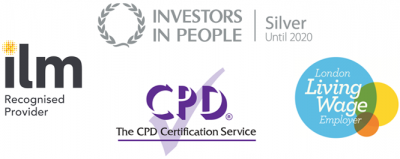Nov
26
2015
Social media – why bother?
By Gill Dandy.
Social media - why do so many get it so wrong? What is it about the tweet; the post; the share; the IM; that means people and organisations seemingly fail to engage brain first? With the potential to reach millions in an instant would your company and brand messages not benefit from a second thought before hitting send?
The power of social media will be harnessed more effectively if we think strategically first.
Here are six top tips from our Social media and online communications: a strategic approach course to help you use the power of social media and make your communications more socially engaging.
6 Top Tips
1. Have a strategy
Know what you are going to do and why on social media. Have SMART objectives that are aligned to your business objectives. Just because ‘everyone else’ is on social media, isn’t a good enough reason for you to jump in feet first. And put some budget behind your strategy - social media is anything but free.
2. Lurk
Get to know the landscape. If you have never read a blog post or don't know why you should use a hashtag – find out. Open a Facebook account, talk to a teenager about Instagram, follow your favourite commentators on Twitter, connect with colleagues on LinkedIn, and see how your competitors or other organisation you admire use social media. Do your research – and give it time.
3. Choose your channels
Find out which social media channels fit best with what you want to say, and build a profile on the most relevant ones. If you want to connect with other businesses, LinkedIn might be a good starting point; if building a community of volunteers is your aim, give Facebook a whirl; if you organisation has lots of fab photos, infographics or great visual resources then maybe Pintrest is the one for you.
4. Start small
Please, please, please don’t bite of more than your organisation can metaphorically ‘chew’. It’s a sure fire way to fail – and lose heart. Start small, with just one relevant social media channel; a bank of relevant, interesting, and fun information to post; and post regularly. It’s important to post regularly and often, but not too often. Only you will know what your resources will allow – but remember while once a week or a month might be regular – it’s probably not often enough.
5. Say something
It’s important that what you say via social media channels reflects your organisation, its brand and its values in ways that engage those you want to reach. Whilst 1000’s might have been intrigued by Stephen Fry’s ‘I’m stuck in the lift’ posts, you’re unlike to gain followers by tweeting what your CEO had for breakfast. But, your organisation’s views on the latest government, sector or industry announcement could be quite a different story.
So, think carefully about how you want to be perceived and create a bank of information which reflects this and post.
6. Monitor
If time, and therefore money, is being spend on developing a social media profile for your organisation it is important that you know what’s being said by you and the impact it is or isn’t having. But it’s also important to monitor to understand what others are saying about you and why. Social media monitoring tools make it relatively easy to find out what’s going on – so long as you decide at the outset what you are monitoring and why.
And finally…
Don't try to control. Social media works because it is seemingly spontaneous, personal and personable. Don’t try to be too corporate in your approach – be social!
Discover more about building a social media strategy for your organisation with our one-day course.
Gill Dandy is a communications professional with 25 years consultancy and in-house experience in the public relations industry. Her communications experience in this sector includes working as Director of Development and PR in Higher Education, Communications Director of a membership organisation and Interim Director of Communications for a disability charity.


